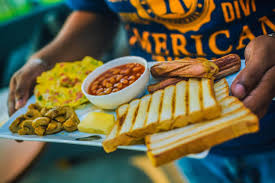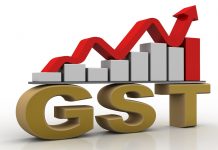This article is written by Uzair Ahmad Khan, pursuing a Diploma in Entrepreneurship, Administration and Business Laws from LawSikho, a student of Teerthanker Mahaveer University, Moradabad.

Introduction
Goods and Services Tax (GST) plays an important role in the economy of the country. Restaurants fall within the ambit of services and services are taxable under the GST. In this article, we will discuss the previous as well as new tax rates slabs which are fixed by the GST council meeting.
What are the components in a Restaurant Bill?
It is important to understand the components and taxes included in the restaurant bill. The components are followed as-
-
Bill Amount
The estimation of the amount on the food items before imposing taxes directly goes into the pockets of the eatery proprietors, in specialized terms, it is referred to as taxable value.
-
Service Charge
Service charge is an income to hotels and it is not charged by the government. First of all, note that the service charge is not a tax at all, it is totally voluntary.
-
GST (Tax Component)
It is the tax segment imposed by the legislature and the same will be gathered by the eateries from customers and pay to the administration.
What is a service charge?
Service charge is a charge levied by the restaurants for the services provided by the restaurants to its customers. The service charge is not a tax and goes to the restaurant as there are no specific guidelines provided by the tax authority and restaurants have full discretion to charge 5% to 20% on the value of the bill. It is also important to note that service charge is not mandatory and the decision lies with the customer whether to pay it or not and GST will be imposed separately on the service charge.
What are the various taxes levied on the restaurants?
The Goods and Services Tax is a one expense routine which disposed of the various Federal and State Taxes. A four-level expense structure has been established by the GST Council where assessments will be required at 5, 12, 18, and 28%. The GST Council has conceded to various expense chunks for eateries relying upon their turnover and whether they are AC or Non-AC.
This implies buyers would need to spend pretty much relying upon whether they are visiting an eatery with Air Conditioning or only a normal Non-AC sustenance joint. The administration charge rates at eateries in 5-star, 7-star lodgings will be a lot higher at 28 percent.

Original GST rules for Restaurants
Under GST, restaurants fall into three different tax rate slabs. The slabs are followed as:
- If a restaurant does not have air conditioning than it will charge 12% GST.
- If a restaurant has air conditioning than it will charge 18% GST.
- If there is a restaurant in a five-star hotel than the said restaurant will charge 28% of GST.
- Earlier all restaurants in India could take advantage of the input tax credit which means when you paid GST while buying supplies for your restaurant, the amount could be subtracted from your tax bill.
Input Tax credit for restaurants
As per the new changes of GST, if a restaurant falls into the 5% GST slab than the restaurant cannot claim for the input tax credit on its monthly returns. Whereas, if a restaurant falls into the 18% GST slab then the restaurant can claim for the input tax credit on its monthly return.
The reasons behind taking away the input tax credit facility from the restaurants is that the government felt that restaurants were not passing on the benefit to their diners which would normally be done by lowering prices. Since the goal of the GST, the regime is to reduce consumer prices; this was a problem for the council.
Repercussions of removing Input Tax Credit
Just after the removal of input tax credit facility from the restaurants the operating costs of the restaurants have increased. In order to deal with the withdrawal of input tax credit, the restaurants have started raising the base menu prices. Famous brands like Starbucks, Dominos have already increased their base prices as denying the input cost credit has increased the input cost of the restaurants due to which restaurants have quite effectively increased the prices of a few items to cover the portion of the increased cost.
Updated GST rules for Restaurants
The updated GST rules for restaurants are followed as-
- A uniform rate of 5% is levied upon all the restaurants irrespective of the air-conditioned or non-air conditioned of the restaurants and also without the benefit of claiming the input tax credit.
- Takeaways from restaurants and e-commerce operators will attract 5% without getting the benefit of the input tax credit.
- Restaurants in starred hotels charging less than Rs. 7500 per day room tariff will charge 5% GST but will not get any benefit of the input tax credit.
- Restaurants in starred hotels charging 7500 or more per day room tariff will charge 18% GST with the input tax credit benefit.
- Outdoor catering will continue to attract 18% GST with input tax credit facilities.
- The best thing is that now GST rates are not dependent upon the factor whether a particular restaurant is air-conditioned or non-air-conditioned, serving alcohol or not.
Composition Scheme for Restaurants
- Composition scheme under GST law introduced by the government to provide a simple and easy taxing mechanism for small taxpayers to keep up with GST compliance.
- Small business under the composition scheme having a turnover of fewer than 100 lakhs can enroll for the composition scheme and can pay tax at a predetermined rate on the basis of their turnover.
- Under the GST composition scheme, all the small taxpayers need not to file monthly GST returns or pay monthly GST payments.
Regular Taxpayer V/s Composition dealer
| Particulars | Regular Tax Payer | Composite Tax Payer |
| Registration | Threshold limit -Rs. 20L | Limited to Intra-State Supply |
| Territory of Business | No restriction on supply | Limited to Intra-State Supply |
| Switch from regular to the composition or vice-versa | Compliance procedure is high | One crosses the limit, compulsory registration under regular provisions |
| Input tax credit | Depends on the category | Not entitled to avail the credit |
| Business through e-commerce | Can supply goods through e-commerce | Cannot supply goods through e-commerce |
| Tax collection | Allowed to collect tax from the buyer | Cannot collect tax from the buyer |
| Tax voice | Can rise a tax invoice for the outward supply | Can raise Bill of Supply instead of a Tax invoice for the outward supply |
| GST returns | Monthly GSTR 1 & GSTR 3B | Quarterly- only GSTR 4 |
How would Restaurants benefit from GST?
The benefits to the restaurants are followed as-
- GST has made dining out more pocket-friendly by reducing the GST tax rate slab. Purchasers are at long last free from wrangling their minds ascertaining different taxes on their final bill.
- There would be more straightforwardness in business as everything from the buy to the clearance of the item or administration would be recorded.
How would GST affect Restaurant owner?
Due to the reduction in the GST tax rate slabs, the working capital of all the restaurants will be optimized and in turn, consumers can expect the more superior quality of foods and services. Raw materials can be procured at subsidized rates from agriculturalists and farmers at a single stroke instead of owners having to negotiate taxes shall remain uniform throughout states thus making the competition even. The general expense of acquiring merchandise will in this manner decline significantly, making the eatery business a reasonable and effectively sensible endeavor once more.
How would GST impact the restaurants selling alcoholic beverages?
Restaurants which serves alcohol in that case taxes are slightly more complicated. The reason behind all this is the GST regime does not include liquor. It means whenever a diner orders a drink than that particular drinks needs to be taxed at different rates. It depends on the location of the restaurant in India, that could include VAT and any other applicable state taxes. The taxes must only be applied to the alcohol part of the bill, while the GST must only be applied to the food section of the bill. It’s important to set tax rates appropriately in restaurant sale software to stay compliant.
The negative impact of GST on Restaurant Business
The negative impact of GST are followed as-
On 5 stars restaurants and hotels
The current GST tax rate slabs on 5-star restaurant’s charge luxury tax of a whopping 28%. Due to this heavy tax, there is a major blow to the posh restaurants as customers are likely to deter from eating out in such establishments.
On Aerated Drinks
The aerated drinks have been marked by the highest GST slab, that is, 28%. Currently, the effective Tax cost comes between 20.5% to 26% (VAT being levied at 14.5% to 20%, plus the Service Tax).
Conclusion
Finally, we can conclude that the restaurants need to stabilize prices in order to maintain the footfalls and keep business efficient and effective. As new GST tax rate slabs have brought reasons to rejoice for both consumers and restaurant owners. However, there is also a possibility of further changes in the tax rate slabs if the government thinks that there is a need to change the tax rates in order to maintain stability in the industry.
Students of Lawsikho courses regularly produce writing assignments and work on practical exercises as a part of their coursework and develop themselves in real-life practical skill.
 Serato DJ Crack 2025Serato DJ PRO Crack
Serato DJ Crack 2025Serato DJ PRO Crack










 Allow notifications
Allow notifications



